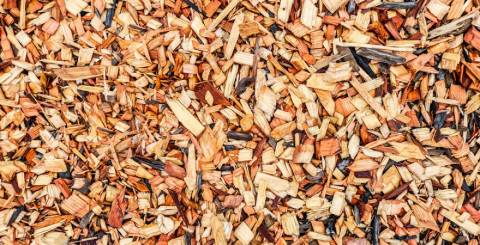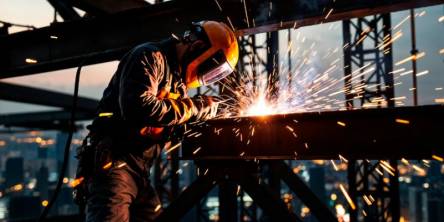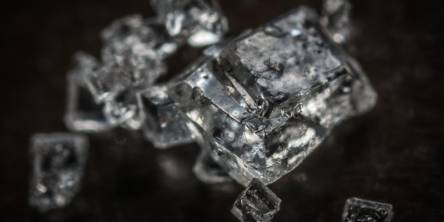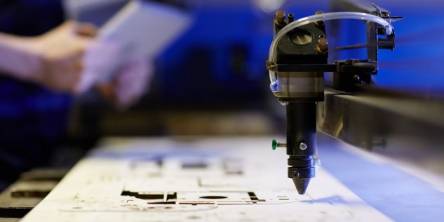How Manufacturers Create Colored Mulch

Colored mulch is a gardening trend that is gaining in popularity. Residential and commercial gardens both seem to appreciate the aesthetic appeal that comes from a bright pop of color or a dark, earthy look. Indeed, some colored mulch is said to have special benefits for plants, though evidence for that is purely anecdotal. But how do mulch colorant manufacturers get vibrant, beautiful colors on mulch in the first place?
This gardening staple used to be dyed only after the grinding process was finished; that is, the wood was ground into mulch and then transferred to a different machine to be dyed. Advancements in mulch coloring equipment means that mulch manufacturers can be more efficient than ever, dying mulch as they grind it.
Mulch 101
To understand mulch colorant, first you need to understand mulch. Mulch is a material that is used to cover the ground surrounding plants, trees, or outdoor structures like playgrounds and pathways.
Purpose
Mulch's purpose is two fold. First, gardeners use mulch to protect plants. Mulch provides a covering that insulates plants from extreme temperatures, over- or under-watering, and weed growth.
Second, mulch creates a finished look to an outdoor space. Because it is uniform in texture and color, mulch adds a beautiful dimension to a garden or playground, making the space look cohesive. Colored mulch adds to the aesthetic appeal, as the color can be chosen to complement the plants, buildings, and structures in the area.
Materials
Mulch comes in a variety of materials. The most popular materials are organic, because they biodegrade, adding helpful nutrients to the soil. Wood chips, grass clippings, leaves, and pine needles are just some examples of organic mulch, which needs to be reapplied every one or two years.
Mulch can also be recycled rubber or crushed stone and gravel. Materials such as these typically last longer because they do not decompose. However, rubber or stone mulch is difficult to remove, so those who use these materials ought to be sure that they do not want to make many adjustments in the near future.
Creating Colored Mulch
Mulch colorant manufacturers and landscapers create colored mulch using liquid or powder dye. The most efficient way to apply these dyes is using a coloring unit that can be added to a regular mulch grinder.
When these coloring units entered the market, they completely changed the game of mulch colorant. Mulch manufacturers and landscapers could apply the dye to their products more efficiently by reducing wood handling time. Mulch manufacturers no longer need to grind up their wood into mulch, and then take another step to dye it the desired color.
As wood handling time goes down, costs go down with it. Fewer steps takes less time, which means fewer man hours per cubic foot of mulch. Indeed, some mulch coloring equipment boasts that it will save two dollars for every yard of colored mulch produced!
The equipment to color mulch varies, but the best ones are fuel efficient and easy to use. It is undesireable for a piece of equipment to break down frequently or require extensive maintenance on a regular basis, so most of these products are durable and easy to use.
In addition, finding a coloring unit that can attach to existing machinery can save both time and money. Buying a coloring unit that needs to attach to a specific mulch grinder can cost hundreds or thousands of dollars for both pieces of equipment. The products that convert to any grinder are the ones that really save mulch manufacturers money.
Coloring mulch can be a relatively easy feat with the right equipment. When choosing machinery to color mulch, it is important to consider the investment of both time and money. Choosing a coloring unit that can color the mulch during grinding will save both time and money down the line.
Similar Articles
When you see a steel ship in the harbor, the first impression is usually sheer scale.
Explore CNC turning—its components, process, benefits, applications, and future trends shaping modern precision manufacturing in various industries.
In the competitive industry of car manufacturing, attaining exceptional performance along with an innovative design needs the incorporation of modern manufacturing technologies
Facing delays, quality issues, or supply chain problems in hardware manufacturing? Learn the top 7 challenges—and practical fixes—to streamline production.
In the rapidly advancing landscape of high-tech manufacturing, electronics, and materials science, diamonds are no longer just gemstones they’re high-performance materials redefining what’s possible in technology.
A business in the manufacturing industry today has to ensure that it chooses the precision-engineered components suppliers keenly since the competition is very stiff
Selective Laser Sintering, or SLS, has established itself as one of the most reliable and widely used 3D printing technologies. This method is valued for its ability to produce complex, durable, and high-quality parts without the constraints of traditional manufacturing.
In the retail and display industry, the visual appeal of products is paramount. Customers are constantly drawn to displays that are not only eye-catching but also provide an immersive experience.
As previously established, CO2 laser technology operates by shining a high-power infrared beam on a mixture of gas that contains carbon dioxide, nitrogen, and helium. This technology is well known for the fact that it is able to engrave onto a variety of materials such as wood, glass, plastic, leather, and even some metals with high precision and without contact.









